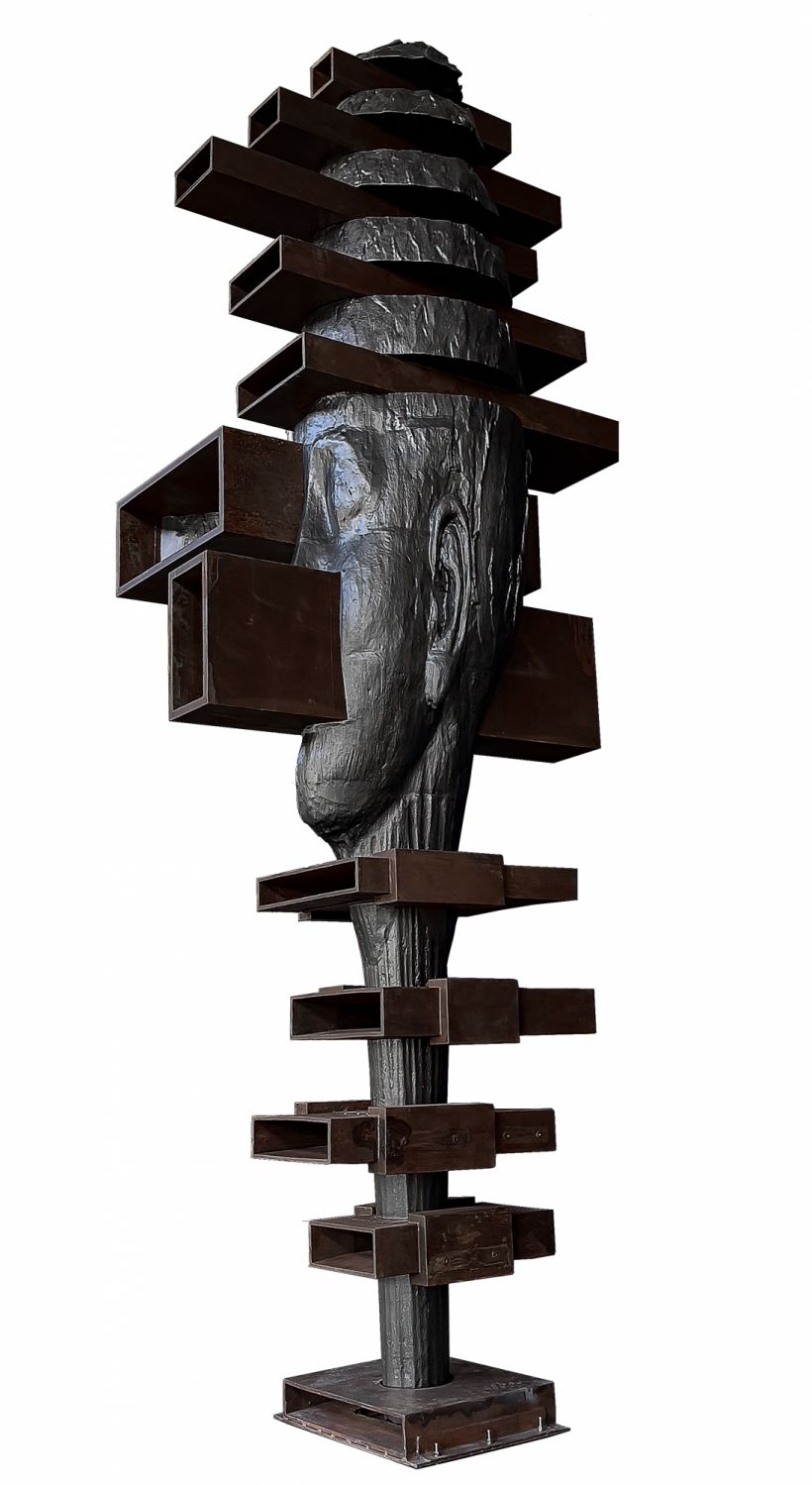Wallace Chan tells Tatler about his recent Venice exhibition, Totem, featuring a monumental sculptural installation housed inside a 15th-century warehouse
Wallace Chan had a life-affirming epiphany during his six-month tenure as a monk, which he undertook while studying Buddhism and Buddhist art: he likes inhabiting undefinable spaces. “The ideal is being in between all things,” says the jewellery designer and artist, explaining his optimal state: that which can’t be defined singularly. “Having nothing defining my existence is the perfect state of existence.”
His artistic creations reflect this sentiment, resisting any precise definition. His jewellery pieces often look like wearable sculptures, blurring the lines between fine art and design. His lesser-known but equally distinctive sculptures also demonstrate his existentialist philosophy, particularly the pieces most recently on view at Fondaco Marcello, Venice, as part of his exhibition Totem, put together by independent curator and writer James Putnam.

Chan’s titanium heads, which are disassembled elements of a ten-metre-high sculpture, have nebulous characteristics, looking ageless, genderless, raceless and “almost divine or extra-terrestrial”, according to the artist. The ambiguity extends to the 15th-century Venetian warehouse on the Grand Canal housing them, where the original wooden beams fitted on the ceilings are echoed by the iron bars in Chan’s sculptures. The structure represents durability and timelessness, making it, as Chan says, “a space of both the past and future”. He transformed the warehouse into a temple, with the variously sized totemic sculptures and heads lying in disarray across the dimly lit space, forming a maze-like formation.
Conceived during the pandemic and born out of a need to find ways to contend with uncertain and chaotic times, Totem functions as a temple of sorts, the act of visiting being almost akin to seeking solace. “It could be confidence, courage, protection or strength,” says Chan of what people might be searching for. Traditionally, totems function as a symbolic channel between Earth and the divine, a connection which Chan believes can be forged through nature, bringing us closer to higher powers. The exhibition space is also scattered with containers with mythical and sacred creatures like dragons, phoenixes, lions and turtles carved on them to remind us of this.



